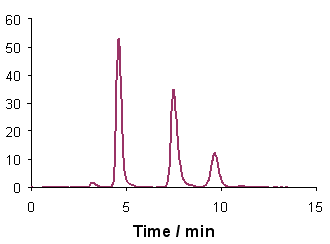Chromatography is a separation method based on the difference in interactions between the components of the sample dissolved in a fluid phase (gas or liquid) and the stationary phase. The driving force of the transport between the phases is the difference in chemical potential. The retention in the stationary phase (partition) depends on the interactions of the molecules, ions, atoms of the sample. As a consequence, their average velocity will be different, and they leave the stationary phase separated. The separated components are detected based on their physical or chemical properties. The stationary phase can be solid or liquid. The mobil phase can be gas, supercritical fluid or liquid. Depending on the mobil phase the chromatographic techniques are classified as gas chromatography, supercritical fluid chromatography and liquid chromatography. (Source: Balla J.: Analytical applications of gas chromatography. Budapest, 1987) All of these chromatographic techniques are widely used for characterization of various mixtures, e.g. environmental samples in site assessment, technology monitoring, etc.
Balla J.: A gázkromatográfia analitikai alkalmazásai. 1977
